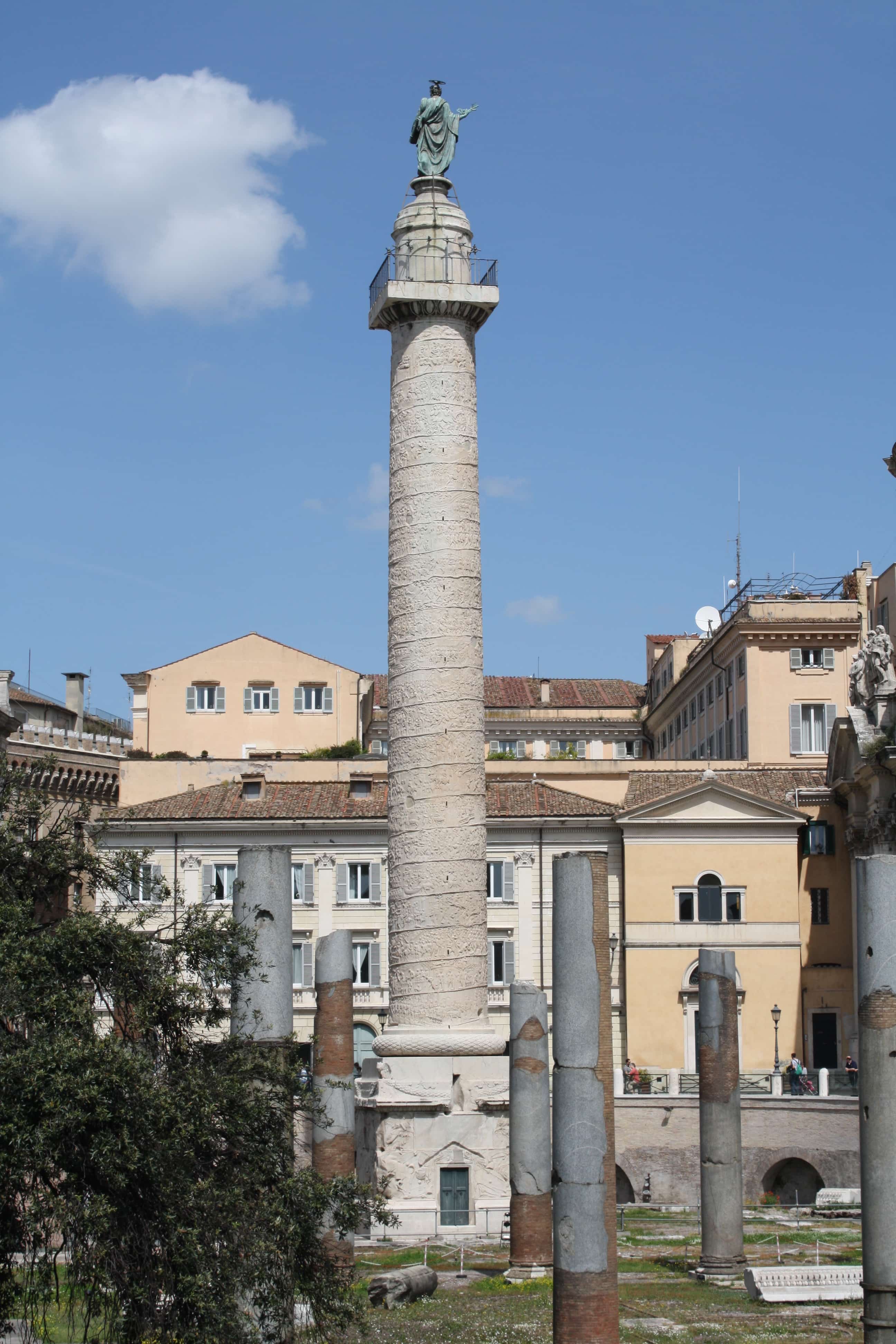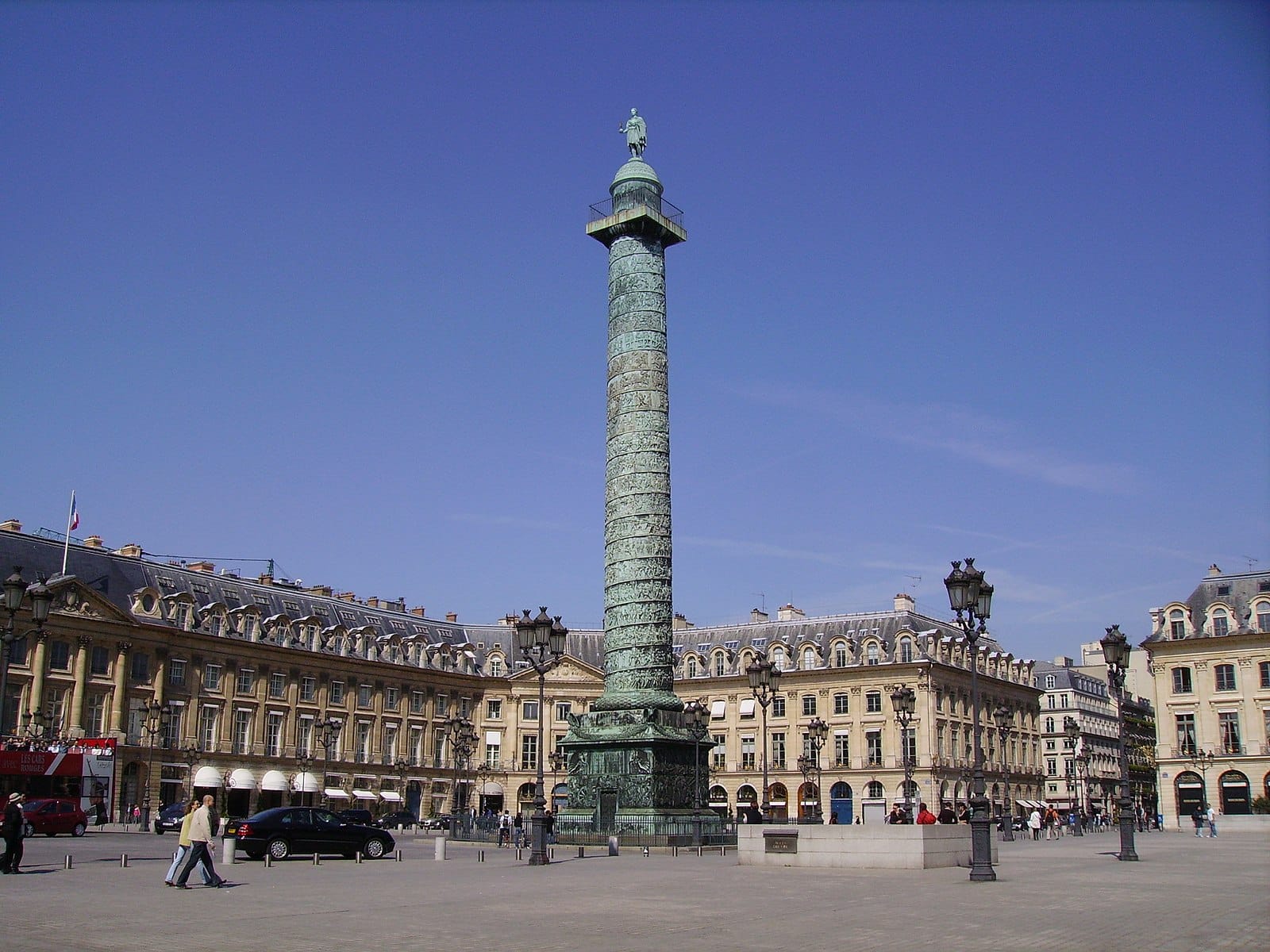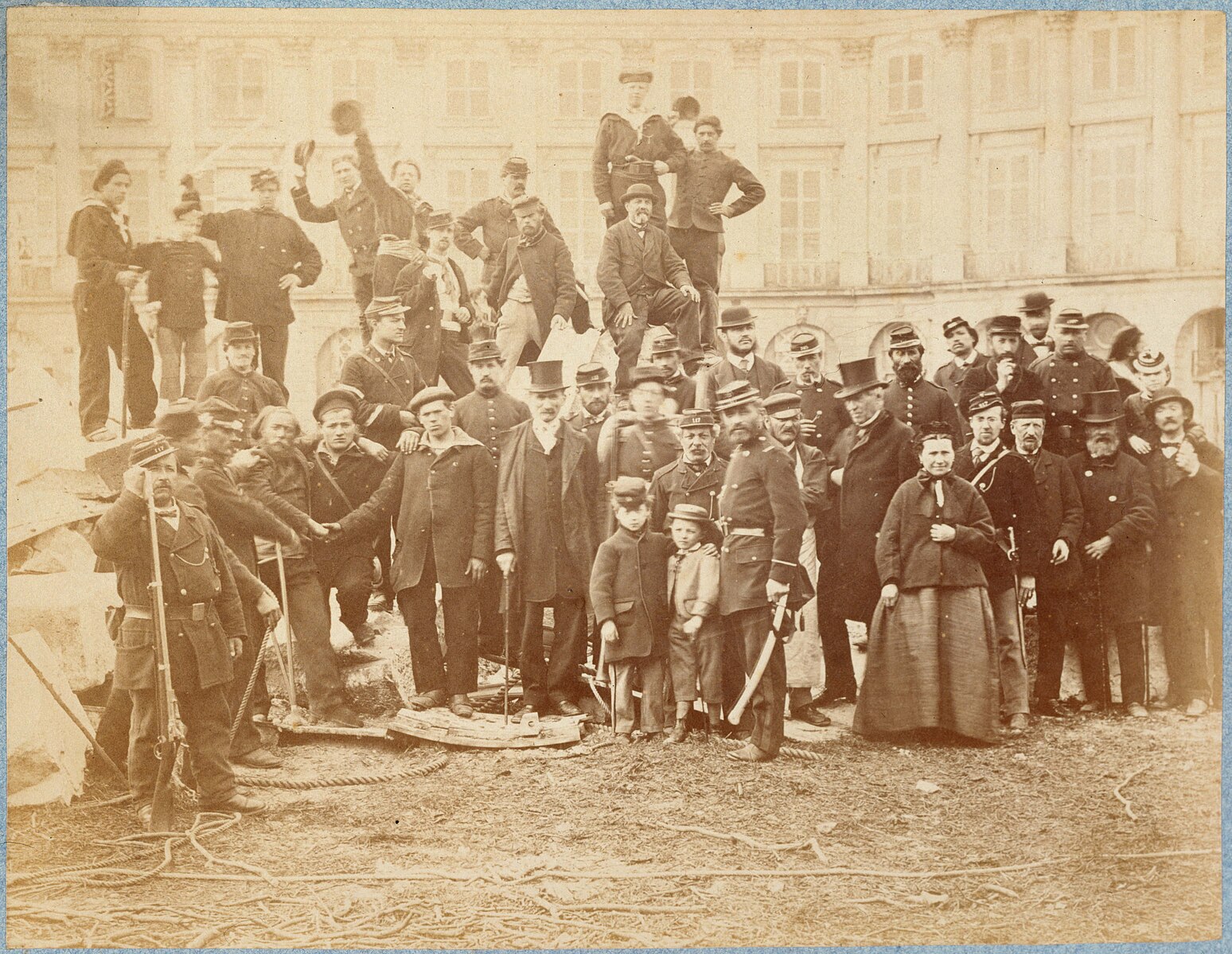What a remarkable tale that of the Vendôme Column! Erected, toppled, rebuilt; one day an Emperor’s pedestal, the next a standard-bearer of royalty. From pride to regret, from Austerlitz to the Commune, this column has never ceased to stir passions.
Rome, AD 107: the Roman Emperor Trajan (53–117) commissions a marble column to celebrate his armies’ victories over the Dacians. Placed at the centre of the Roman Forum, it recounts, upon a spiralling frieze of sculpted bas-reliefs, the principal episodes of the Dacian Wars (101–102 and 105–106). Completed in 113, it is crowned with a bronze statue of the Emperor. The sculpture later disappears, and from 1587 onward it is Saint Peter who rises in its stead.
Paris, 1798: the architect Bernard Poyet declares that “The republican regime must replace the effect of steeples with columns, obelisks, and monuments whose elevation, attesting to the glory of the Nation under the reign of Reason, shall equal at least those towers and spires once raised by fanatics.”
Austerlitz, 2 December 1805: the Russian and Austrian armies of the Third Coalition are defeated by Napoleon I. Their artillery pieces are seized. They will now serve a project worthy of Antiquity itself—a monument commensurate with the glory of the Grande Armée, and in keeping with the principles proclaimed by Bernard Poyet.
In Memory of the Brave
On 21 March 1800, a first decree announced the erection, “in every département, upon its principal square, of a column in memory of the brave of the département, who died in defence of the fatherland and of liberty.”
The project was perhaps too ambitious; though not realised everywhere, it took on formidable proportions at the heart of the capital. For the “column of the brave” was already underway when Napoleon won the Battle of Austerlitz. Yet the work advanced slowly, materials were lacking, and the timely capture of Austrian and Russian cannons rekindled the enterprise as much as it transformed it.
Vivant Denon, director of the Musée Napoléon (now the Louvre), already oversaw the project. Architects Jean-Baptiste Lepère and Jacques Gondouin were called upon to bring to life this immense column, destined to reach a height of 44 metres.
The painter Pierre-Nolasque Bergeret was charged with designing the bas-reliefs to be sculpted upon 425 bronze plaques, winding upward as on Trajan’s Column. They depict the Boulogne camp facing England, the army’s departure, its battles, and the Emperor’s triumphant return to Paris on 16 January 1806.
At its summit, like its ancient ancestor, the modern column would be crowned with a statue of the Emperor—Napoleon I. The sculptor Antoine Chaudet represented Bonaparte as a Roman emperor, crowned with laurel, a winged Victory in his left hand and a lowered sword in his right.
A Memorable Anniversary
The Vendôme Column was at last inaugurated on 15 August 1810, the anniversary of Napoleon Bonaparte’s birth—a date he no doubt hoped would anchor the monument in eternity. History, however, had other plans. Barely five years later, on 12 April 1814, the Emperor abdicated, and his adversaries hastened to pull down his statue from atop the column, raising in its place the fleur-de-lys banner of Louis XVIII and the restored monarchy.La colonne Vendôme est enfin inaugurée le 15 août 1810, le jour de l’anniversaire de Napoléon Bonaparte qui l’espère sans doute installée pour l’éternité. C’est sans compter les vicissitudes de l’Histoire ! Moins de cinq années plus tard, le 12 avril 1814, l’Empereur abdique et ses adversaires s’empressent de faire tomber sa statue au sommet de la colonne, pour hisser à sa place le drapeau fleurdelysé de Louis XVIII qui marque la Restauration du pouvoir monarchique à la tête de la France.
The “Little Corporal” was exiled to Saint Helena, yet the distance that was meant to dull his memory only served to kindle the legend of the fallen Emperor. Upon the announcement of his death, his popularity proved far too great to ignore. Louis-Philippe seized the opportunity to win favour by placing atop the column a new statue—not of the Emperor, but of the Little Corporal himself, the soldier-leader and military genius in his eternal bicorne, hand tucked into his waistcoat.
This bronze figure by Charles-Émile Seurre, now housed at the Invalides, continues to impress visitors with its bearing and presence. Why, then, did it leave the column? Because Napoleon III—at once nephew and grandson (through his maternal grandmother Joséphine) of the first Emperor—ascended the throne in 1852 and wished for his illustrious predecessor a representation that did not obscure his political role in the nation’s history. Seurre’s Napoleon thus yielded, in 1863, to the sculpture by Auguste Dumont. Yet again, this would not last.
The Fall of the Vendôme Column
The Franco-Prussian War brought about the downfall of Napoleon III’s government; he was taken prisoner on 3 September 1870. The new authorities rejoiced too soon, for the Paris Commune, between March and May 1871, overthrew both the National Defence Government and the Vendôme Column itself. The monument was denounced as a “symbol of brute force and false glory” and, after great difficulty, was sawn down on 16 May—only to be swiftly regretted.
The Third Republic ordered its restoration and re-erection, placing the cost of this colossal work upon the painter Gustave Courbet, unjustly accused of having ordered its destruction. The bill was steep: over 320,000 francs, payable in annual instalments of 10,000 francs for 33 years. Too great a sum for one man: Courbet died on 31 December 1877, before paying even the first instalment of this accursed column, which once again towered over the Place Vendôme from 18 December 1875 onward.
From Austerlitz to the Place Vendôme, the column witnessed as many victories as defeats—those of nations as well as individuals. Classified as a Historic Monument since 31 March 1992, it remains today an unmistakable landmark of the Parisian landscape, as surely as the Alexandre III Bridge. Though it cannot be visited, one should know that the staircase within leads to a terrace offering one of the most splendid views of Paris.
Marielle Brie de Lagerac
Marielle Brie de Lagerac est historienne de l’art pour le marché de l’art et l'auteure du blog « L'Art de l'Objet ».



